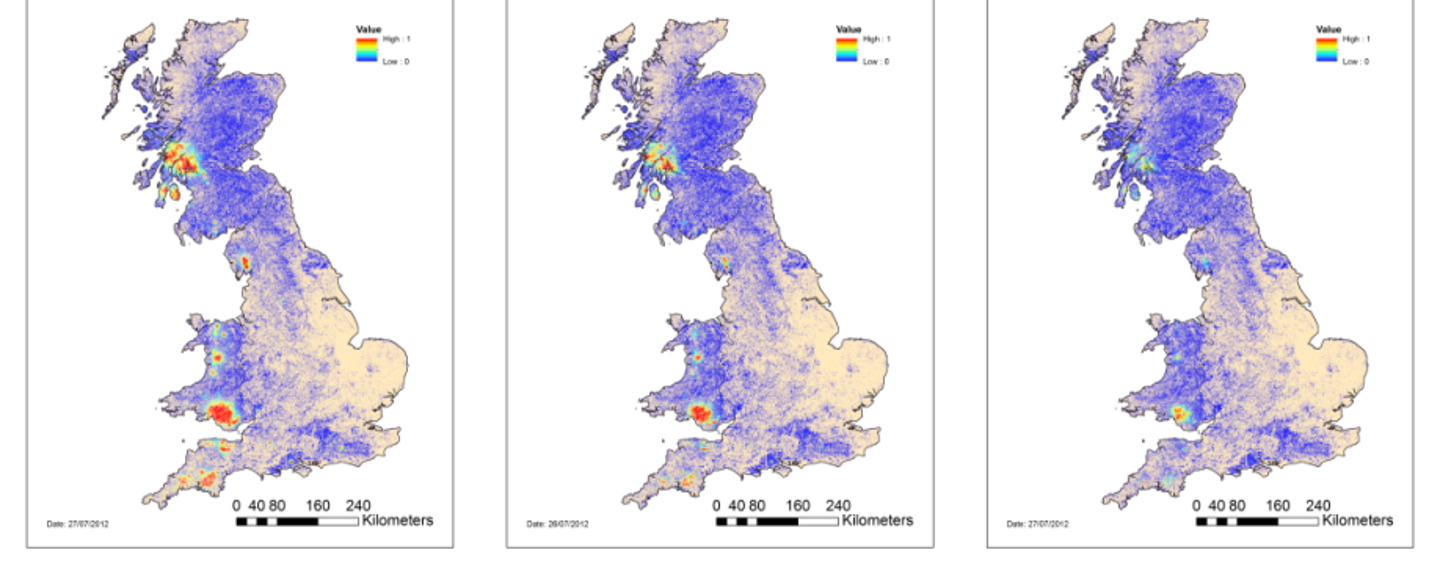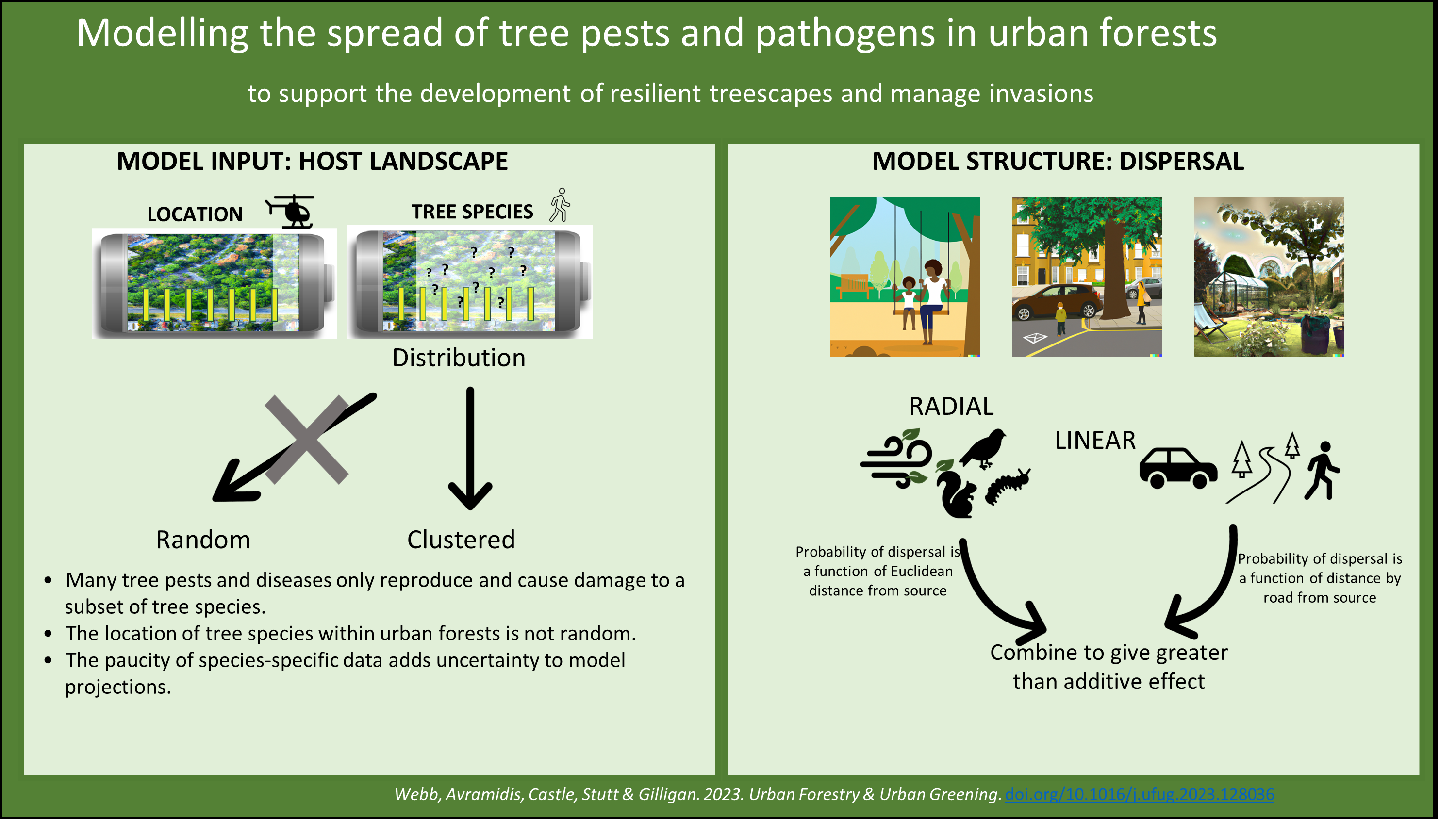Citrus Huanglongbing (HLB)
Location: USA, Australia
Project members
- Dr Rich Stutt
- Professor Chris Gilligan
Avocado Sunblotch Viroid
UK Plant Health
Location: UK
Protecting woodlands from epidemics
The UK Government’s England Tree Action Plan (2021-2024) estimates that trees in our landscapes provide economic, cultural and social ecosystem services in the region of £4.9 billion per year, with a total asset value of £175 bn.
Increased trade and climate warming have enabled new introductions from continental Europe to establish and spread into the UK. Oak Processionary Moth, Sweet Chestnut Blight and the larger eight-toothed European spruce bark beetle are amongst recent introductions which, if not controlled, could have a devastating impact on forestry and tree landscapes. Ash die-back, now wide-spread in the UK, threatens to destroy over 80% of the 185 million ash trees. The arrival of a beetle the Emerald Ash Borer, which has destroyed large areas of trees across USA and European Russia, could result in an even greater decline of native Ash in UK. To address these issues the team at Cambridge built an epidemiological toolkit that helps policymakers predict the status and future spread of tree diseases. Their models have been used to inform ministerial decisions on strategies such as the imposition of an import bans to reduce the risk of new introductions, surveillance strategies to support outbreak management and evaluation of potential control strategies to optimise the use of limited resources.
Related links
emerald ash borer
oak processionary moth
https://www.plantsci.cam.ac.uk/research/groups/epidemiology-and-modelling

Predicting the spread of invasive pests and pathogens through urban forests
Avenues of trees of a single species are a striking feature in many towns and cities across England and Wales. These magnificent landscape features are frequently threatened by the arrival of invasive pests and pathogens which in the case of Dutch Elm Disease, saw the devastating loss of a single species from urbanised areas, within a decade.
This project examined how human activity and tree distribution across private and publicly owned land might affect the rate and direction of spread of invasive pests and pathogens.

The modelling results have important implications for the development of strategies to manage and control outbreaks, highlighting the need not only to consider distance from infested trees but also how connected trees are via road and rail networks. The study also demonstrates the need for effective pest biosecurity measures at international ports and transportation hubs and to consider the potential impact of species composition and distribution in an epidemiological context when planning future planting initiatives.
Pathosystems
- Emerald Ash Borer
- Oak Processionary Moth
- Phytophthora ramorum
- Ash dieback
- Sweet Chestnut Blight
- Oriental chestnut gall wasp
- Ips typographus
Project members
- Dr Rich Stutt
- Dr Cerian Webb
- Dr Yevhen Suprunenko
- Professor Chris Gilligan
Funders
Department for Environment Food and Rural Affairs Forest Research Biotechnology and Biological Sciences Research Council